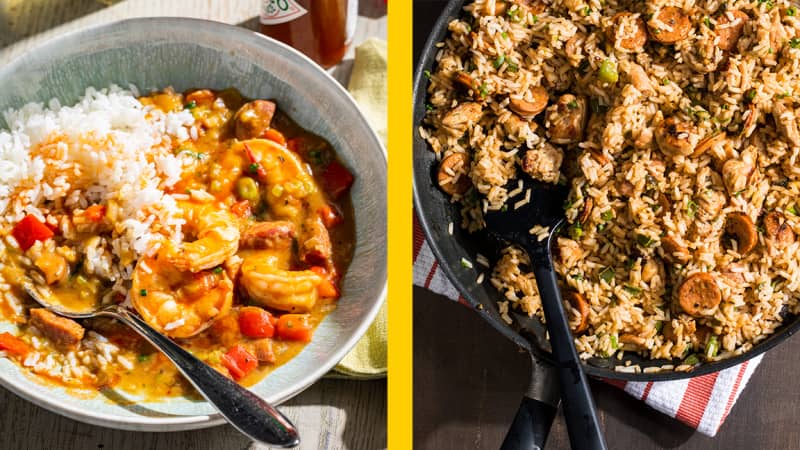What ties gumbo and jambalaya together? Louisiana tradition.
Whether it's traditional Cajun cooking hailing from the prairies and bayous of southwest Louisiana or the revered Creole cuisine of the Crescent City, the litany of famous Louisiana dishes is long and mouthwatering: Po’ boys stuffed with roast beef, fried seafood, or hot sausage. Muffulettas stacked with Italian cured meats and olive salad. Boudin sausage eaten in the car on I-10 with a care package of smoked andouille in the passenger seat. Crawfish étouffeé and shrimp creole gleaming in the finery of storied French Quarter institutions.


